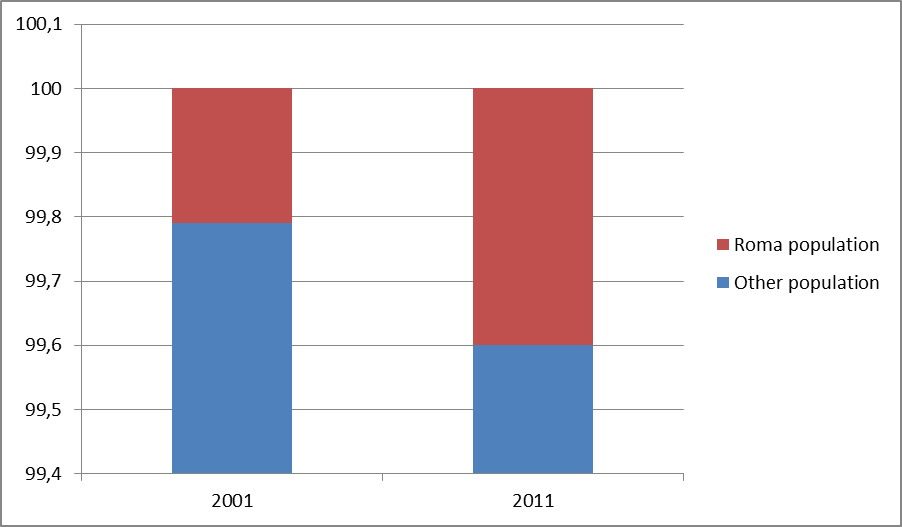Demographical data
In Croatia there are 16,975 members of Roma minority according to the data collected by the Croatian Bureau of Statistics for the latest population census. It represents a total of 0.40% of overall population in Croatia for the year 2011. The number of the Roma in Croatia has increased since the last population census in 2001 by 7,512 or by 44.25%. In the last 10 years (between 2001 and 2011), there has been an increased number of Roma population in total population by 0.19% (from 0.21% in 2001 to 0.40% in 2011). Roma population is a fairly young population and their life expectancy is low. The Roma minority consists of younger people rather than older. The average age of all the Roma population is 21,9 as the average of the total population in Croatia is 41,7 years.
According to the Croatian Bureau for Statistics, the largest population of Roma is located in Međimurska County. The County is home to 5,107 members of the total Roma population in Croatia. That is a high 30.09% of the total Roma population in Croatia. The county that has the second largest Roma community is Osječko-baranjska County. There we can find 1,874 members of Roma population (11.04%). Sisačko-moslavačka County is home to 1,463 Roma (8.62%).
Although it seems a relatively large number, it is pretty small when compared to the rest of the population in the selected counties. The only, so to say, ‘’bigger’’ concentration is shown in Međimurska County. Roma population accounts for 4.49% of the total population in the aforementioned County. In Osječko- baranjska County, Roma population is 0.61% of total population and in Sisačko-moslavačka County, 0.85%.

The graph shows the percentage of Roma population in the total population in the years 2001 and 2011.
References:
HRVATIĆ, N. i IVANČIĆ, S. (2000). »Povijesno-socijalna obilježja Roma u Hrvatskoj«,
Društvena istraživanja, Zagreb, god. 9, br. 2-3(46-47), str. 251–266.
Hrvatsk zavod za statistiku, http://www.dzs.hr/
ŠTAMBUK, M. (2000). »Romi u Hrvatskoj devedesetih«, Društvena istraživanja, Zagreb, god.
9, br. 2-3(46-47), str. 291–315.
